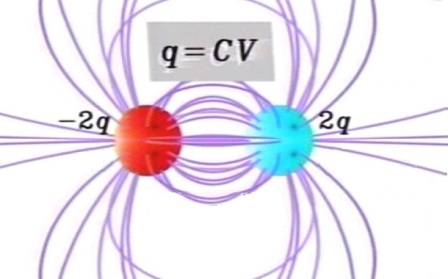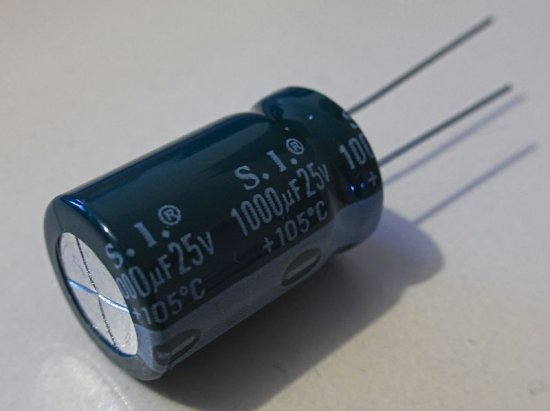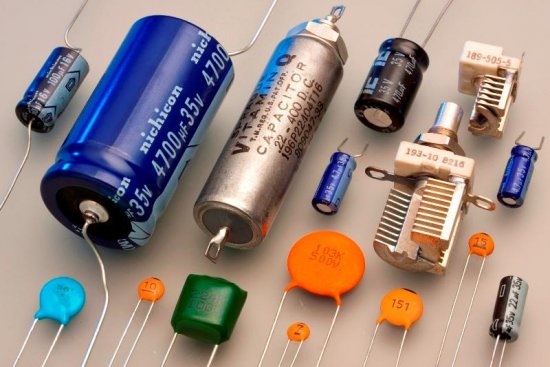What is capacitance in electrical engineering
Electric capacity characterizes the property of conductive bodies to charge under the influence of an electric field, and also to accumulate electric energy in the field of these bodies.
An analogy of electrical capacity in the field of hydrostatics can be the specific capacity of a vessel per unit height, which is numerically equal to the area of the horizontal section of the vessel.
Imagine a tall cistern. The amount of liquid (the amount of electricity on the body) that can be stored in the tank depends on the height of its filling (body potential) as well as the volume of liquid per unit height of the tank (body capacity). This volume of liquid, in turn, depends on the area of the horizontal part of the tank — on its diameter.
The larger this diameter, and therefore the volume per unit height, the greater the specific capacitance per height of the tank (the electrical capacitance between the two plates is proportional to the area of the plates, see — What determines the capacitance of a capacitor?).Accordingly, it depends on the value of the volume of liquid per unit height and the work that must be spent on filling the tank.

Suppose there are two copper balls of the same size (red and blue) located at a certain distance from each other in space. Take a 9 volt battery and connect it with opposite poles to these two balls so that «+» is connected to one ball (to the blue) and «-» to the other (to the red). An electrical potential difference equal to the battery voltage V = 9 volts will appear between the balls.
The electrical states of these two copper balls immediately became different than before the battery was connected, because now there are opposite electrical charges on the balls that interact, experiencing the force of attraction towards each other.
We can say that the battery has transferred a positive charge + q from the left ball to the right and therefore the potential difference between the balls has become V = 9 volts. Now the left ball is negatively charged -q.

If we add another battery of the same type to the circuit in series, then the potential difference between the balls will become twice as large, the voltage between them will no longer be 9 volts, but 18 volts, and the charge will move from the ball to the ball will also doubled (it will become 2q) as well as voltage. But what is the magnitude of this charge q that moves each time the voltage rises by 9 volts?
Obviously, the magnitude of this charge is proportional to the potential difference created between the balls. But in what exact numerical ratio are charge and potential difference? Here we will have to introduce such a characteristic of the conductor as the electrical capacity C.
Capacitance is a measure of a conductor's ability to store electrical charge. It is also important to understand that when the first wire is charged, the strength of the electric field around it increases. Accordingly, the effect of the first charged wire on the second charged wire will increase, especially if they start to get closer to each other.
The force of interaction between charged wires becomes greater if the distance between them becomes smaller. In addition, depending on the parameters of the medium between the wires, the strength of their interaction can also be different.
So if there is a vacuum between the wires, then the force of attraction between their charges will be one, but if nylon is placed between the wires instead of a vacuum, then the force of the electrostatic interaction will triple, because the nylon passes an electric field through itself 3 times better than air and actually due to the electric field, the charged wires interact with each other.
If the charged wires begin to spread from each other in different directions, then they will interact less, the potential difference will be greater for the same charges, that is, the capacity of such a system will decrease with the separation of the wires. The work is based on the idea of electrical capacity capacitors.
Capacitors
The property of charged conductors to electrostatically interact with each other through each other's electric fields separated by a dielectric is used in capacitors.
Structurally, capacitors are two plates called plates. The plates are separated by a dielectric.In order to obtain the greatest possible capacity, it is necessary that the plates have a large surface and the distance between them is minimal.
Capacitors in electrical engineering serve as accumulators of electrical energy in an electric field that is concentrated in the volume of dielectric placed between the plates of the capacitor, due to which the charge is accumulated or removed (in the form of an electric current).
Two plates are placed a short distance apart inside a sealed housing. Ceramic, polypropylene, electrolytic, tantalum, etc. — capacitors differ in the type of dielectric between the plates.
Capacitors are high voltage and low voltage, depending on the dielectric strength.
Depending on the area of the plates and the dielectric constant of the dielectric used, there are capacitors with a large capacity, reaching hundreds of farads (supercapacitors), and small capacity — units of picofarads.
The use of electrical capacity in electrical engineering
The property of capacitive systems is widely used in electrical engineering in alternating current technologies, especially in the field of high and ultrahigh frequencies.
In DC technology, capacitance is used in permanent magnet magnetizing devices, for pulsed electric welding, pulsed dielectric breakdown tests, current curve smoothing in rectifiers, etc.
The capacitance of any system of isolated conducting bodies, which cannot be completely reduced to zero, can in some cases have an undesirable effect on the characteristics of electrical devices (in the form of interference, capacitive leakage, etc.).
You can get rid of such an influence or by appropriately compensating its effect (usually using inductance), or by creating such conditions in which the potentials of certain bodies of the system with respect to surrounding objects have a minimum value (for example, grounding of one of the bodies).


